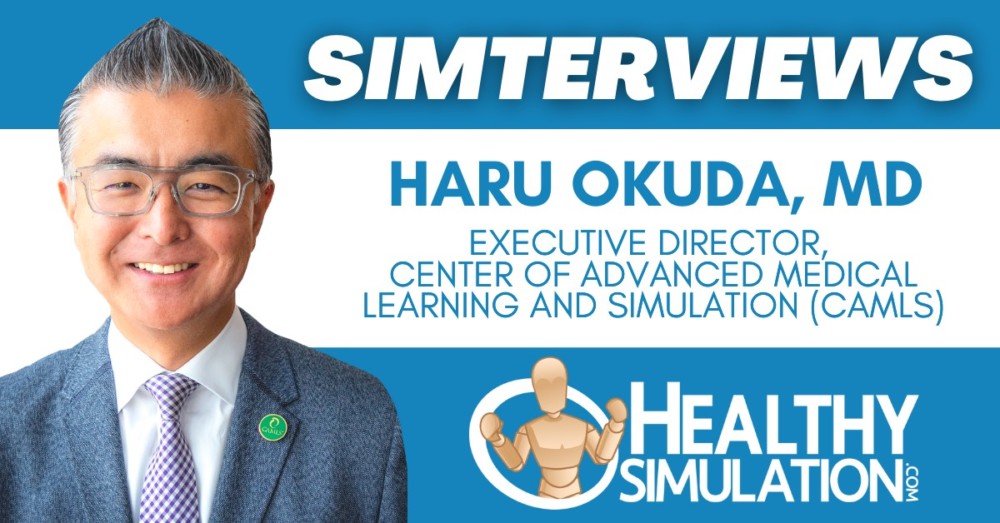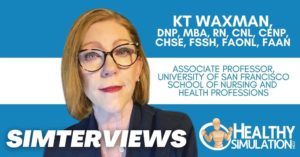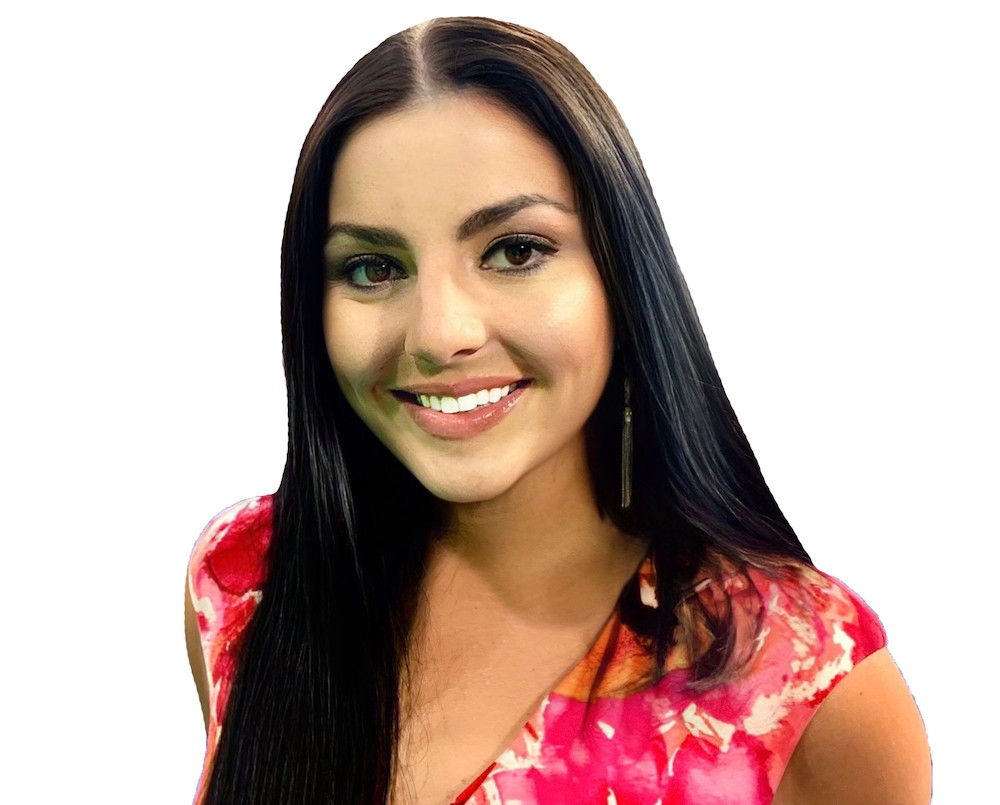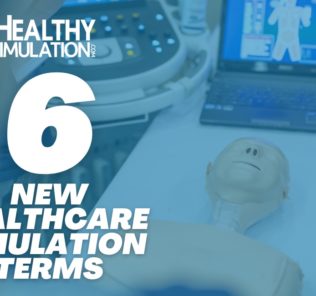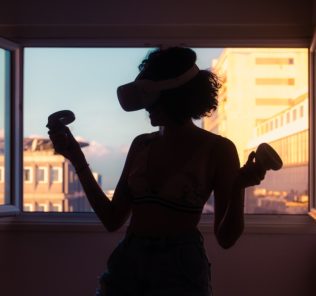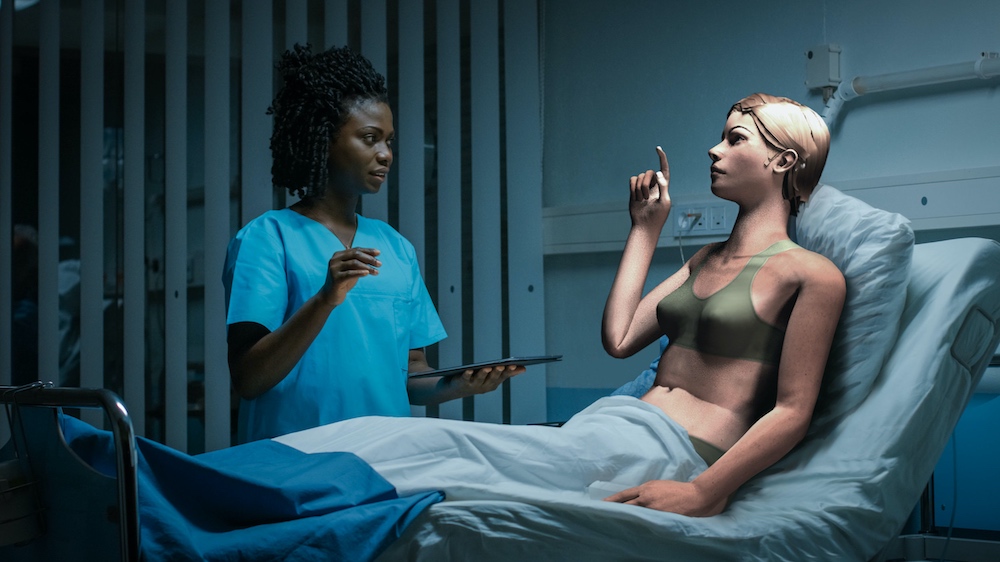Simterviews: Dr. Haru Okuda | Executive Director, CAMLS
Dr. Haru Okuda, MD, FACEP, FSSH, is the executive director of University of South Florida Health’s Center for Advanced Medical Learning and Simulation (CAMLS). In this role, he has oversight of a 90,000-foot, state of the art, advanced training facility, with the mission of creating and providing experiential learning that improves clinical skills and patient care in the community and around the globe. In addition to this role, Okuda serves as USF Health’s assistant vice president of the Office of Interprofessional Education and Practice, where he is focused on creating interprofessional learning opportunities from early healthcare training to clinical practice.
He is a professor at the Morsani College of Medicine and practices clinically in the emergency department at Tampa General Hospital. Prior to coming to USF Health, Okuda was the national medical director for the Simulation Learning Education and Research Network where he established national strategy and business plans for simulation-based programs at more than 150 U.S. Department of Veteran Affairs’ medical facilities.
Sponsored Content:
HealthySim: Please tell us a little bit about yourself? Can you elaborate on your role within CAMLS? What are your professional goals?
Dr. Okuda: Clinically, I’m an emergency physician, and I still practice a few shifts a month, but my career has really been in healthcare simulation. I’ve been at it for almost 20 years now. I started with focusing on emergency medicine residency training at Mount Sinai in New York. Then I expanded to medical student training at Mount Sinai in New York. From there I went to the New York City Public Health System to build a simulation center for the 11 public hospitals. This was more focused on front-line staff, team quality and safety efforts. Then, prior to coming to USF Health CAMLS, I spent almost eight years with the U.S. Department of Veterans Affairs as the national medical director. I helped build the simulation program for the 150 hospitals across the VA network. We built a 50,000-square-foot simulation center in Lake Nona in Orlando.
CAMLS is interesting. As far as simulation centers are concerned, it’s set up as a non-for-profit underneath the University of South Florida, which is a public institution under the Florida state. As it’s set up as a non-for-profit it is a corporate structure and, as the executive director, I oversee all aspects of CAMLS’ business, strategic direction and program offerings. In the past, my expertise has been more on the clinical medical side, but now I have oversight over the financials.
Sponsored Content:
I have a CFO, a director of operations, director of education and business director. I helped run the non-for-profit organization and I report up to a board of directors. It’s very different from what the first 18 years of my career has been. I’m still active in curriculum development and things that I enjoy doing, like teaching education, training and then building programs. Our focus at CAMLS and our mission is really focused around building clinical skills and training to improve patient care, patient safety both in our community locally and also globally.
The reason why I got into simulation was really around patient safety and quality improvement. When I was in medical school and residency back in the late nineties and early, early 2000s, I was one of the last physicians that went through the old-school method where they didn’t have our restrictions. I think the longest shift longest call I took was almost 48 hours. It was very much to see one, do one, teach one as it related to training. I had multiple situations where I felt I was placed in a situation that was unsafe for the patient because I never learned a procedure in a simulator. I think a lot of residents and medical students do now.
We learned to practice on patients and I felt it put patients at risk, and also put the learners at risk. I felt very uncomfortable, very unsafe from a psychologically safe perspective. I vowed at that point to see if there was an opportunity to make a difference in how we train our medical students or residents. That’s what I wanted to do. I think that early 2000, right after the Institute of Medicine’s “To Err is Human” report came out saying a hundred thousand people die every year from medical errors, really kick-started the simulation revolution. I was able to catch on to the sort of early wave of that. I built my career around using simulation-based education and training in order to improve patient care, quality of care, teamwork and communication.
I think from a personal and professional perspective my main goal is about improving quality and safety in healthcare. My secondary passion now has become a simulation-based education, meaning how we advance the message around simulation. I think the folks that have “drunk the Kool-Aid” have “drunk the Kool-Aid.” We continue to preach to ourselves and say simulation is important, but how do we carry that message outside of our simulation community to the government, both local, state and federal? What about to research opportunities for hospitals and healthcare systems? How do we really advocate for the importance of simulation? There is plenty of evidence that healthcare simulation does create a safe environment for patients and does save lives.
The advocacy part of it is really important for me. I’ve benefited from many mentors over the years. They range from David Gaba, who I look up to and work with very closely in the past, to Adam Levine, one of my original simulation mentors and many, many others. I think I’m at a point in my career where I really want to be able to give back and to develop future leaders in healthcare simulation. That’s also the reason why I put my name in the hat to run for president of the Society for Simulation in Healthcare (SSH). I feel honored and privileged that I was elected. I’ll be president-elect starting next year, so I can really work at the international and national level as it relates to simulation.
I think the last part of my future goal is really looking at how we innovate in this space. The future, especially with COVID-19, which really has accelerated the timeline of what simulation is going to look like in the next five years, is going to involve distance simulation and virtual simulation, whether it’s augmented virtual or a spatial computing technology. I think we really have to think about what the features of simulation-based training, experiential learning looks like.
HealthySim: What brought you into the field of simulation? What previous experiences support your work in simulation?
Dr. Okuda: I definitely feel like throughout my career every step has built on itself. In my journey, I started with what I knew, which is why I was passionate about medical students and residents in medicine; training people to become doctors. I quickly realized, as I was trying to think about how to improve patients’ safety, my guiding light was that you can’t do simulation in silos, you can’t do it just with physicians, can’t do it alone. That’s when I went to the New York city public health system, and I started understanding working across professions, working with nurses in quality and safety, working across specialties in simulation.
I actually did a fellowship in clinical quality at that point, to gain a better understanding of what some of our outcomes that we’re trying to aspire to reach were. It’s not simulation for the sake of simulation or just for good experience, it’s simulation that actually impacts behavior. People are actually performing the actions in the clinical environment that you’re trying to teach in a training environment, and ultimately impacting clinical outcomes.
When I went to work at the VA, we had this pretty tremendous hub-and-spoke model with a centralized simulation program involving 150 medical facilities around the country. I learned how to expand and build programs that have exponential impact and leverage in a matrix network simulation design. I can only teach one, two, five or 10 people at a time, but if I’m able to build programs that are standardized, I can use high-quality evidence and standards to train the trainers.
So by teaching people to fish, as opposed to providing the fish, you can really build on the patient safety mission. All of this has led to my current position as the executive director of CAMLS. My focus is now primarily about building a lot of new innovative programs. As a nonprofit, we’re able to engage with partners in technology, and we have a local partner here, Immertec, that’s a startup company specializing in the use of virtual reality in the operating room. I couldn’t do that alone in a federal government or academic setting, because they don’t have coders, resources and all of the components necessary for this technology. Now, as experts in simulation, patient safety, and quality at CAMLS, we can partner with companies, businesses, engineering firms and innovators, and then actually start to define the future of simulation. That’s been a really exciting journey in the last two years.
HealthySim: What do you see as the biggest challenges we are currently facing across the simulation industry as a whole?
Dr. Okuda: Right now, COVID-19 has presented multiple challenges. We’ve been working and navigating through many of them successfully, but we are still working on some of them. With the coronavirus, we’ve been limited in face-to-face encounters because it’s not patient care, it’s education and training. Budgets have also been adversely impacted because of COVID-19. As with many large organizations, when you’re in a financial crisis, education and training are typically the first to go, unfortunately. I don’t believe in that, but that’s what happens.
As I talked to my colleagues in the simulation field, especially the ones in smaller simulation centers, they’re especially being pressured because of budget cuts. Some of them have had their centers converted to clinical space, or they’ve been limited or restricted from doing face-to-face onsite training. I think it makes sense, but I believe that certain types of simulation training are essential. We did simulation-based training when COVID-19 hit because at our local level one trauma center, Tampa General Hospital, was anticipating a surge of COVID-19 patients. This happened after the surges in New York in California. Their frontline staff had no idea how to do all of the required training for wearing PPE for COVID-19 care, or the new protocols in place for intubation and cardiac arrest that were recently created; nobody had trained them.
Nobody looked at the protocols from a human factors assessment or a practical implementation standpoint. We at CAMLS actually went to Tampa General Hospital with our team to do an initial evaluation of the process and protocol so that we could implement a rapid-cycle improvement of their processes. Once we helped to develop these improvements and best practices, we then implemented training. We trained 500 frontline staff, and I think that was essential and critical. I think it prevented more people from getting sick, and I think it maximized our resuscitation efforts in the hospital. So right now, I think COVID-19 really is the biggest challenge in clinical simulation that we have had in the last six months.
HealthySim: What needs to happen for simulation to move to the next level of utilization?
Dr. Okuda: Hospital systems, hospitals, insurance companies and governments really need to understand the value of healthcare simulation and really set that as an expectation. This expectation should be that if you go to a hospital, residents are well-trained and will take care of you.
All residents should have gone through these proven, evidence-based training simulation programs. We still have a ways to get there, but we’re doing better. I think that’s where we need to focus: what we’ve done in the past. We need to build on that to continue improving; I think we need to do that as a society and as an organization. Even though we’ve accomplished a lot of tasks, such as creating dictionaries and standards, there are other standards that still need to be defined. We need to innovate in terms of what simulation and experiential learning mean, and create simulations that are both inexpensive and accessible.
There are great organizations and companies that are addressing simulation needs, but I think we could do this much better. Having worked in the VA and visited some of the more rural VA facilities, I know they don’t have the subject matter experts to teach out there. They don’t have the necessary equipment and the resources to teach virtually.
There are cellphones, iPhones, Androids everywhere in the country, everywhere in the world. We should be able to teach those target audiences through virtual simulation and experiential learning. This technology shouldn’t be available only to the places that can afford it, or just in major cities. We need to really innovate in technology and how we do training, and gear simulations more towards just-in-time training. I think the adoption of healthcare simulation will thereby increase significantly.
HealthySim: What is your greatest advice for those already engaged in simulation, who want to continue to maximize their outcomes and ROI moving forward?
Dr. Okuda: If you are a simulation operator, some of your outcomes might be more focused on improving efficiency, effectiveness and fidelity. Outcomes can be very specific, such as improving your moulage skills or training others. Outcomes are very different depending on who you ask. I think for a clinician, outcomes may include saving lives and reducing infections. Outcomes of an emergency physician may be improving resuscitation and airway management. It’s important to define your outcome at the beginning to know how to define both short- and long-term outcomes. This will also help identify how to focus yourself so that you’re not getting distracted too much, and that you’re heading towards your endpoint from a return on investment (ROI) standpoint.
Actual ROI is more about the finances and the value around it. To determine ROI from a SIM operational perspective, if you’re more efficient, you’ll save more money by designing processes that eliminate unnecessary steps. There are several ways that you can measure ROI from a clinical standpoint. ROI is very complicated, but it is very important to consider and understand. There are ample resources available, and I’d encourage simulation professionals to look at those resources.
HealthySim: What is something that excites you about the current healthcare simulation industry? (A book, a website, a product, a service, research, conference, etc.)
Dr. Okuda: There is a lot of great work going on at the leadership level for many simulation societies. Bob Armstrong is the current president of the Society for Simulation in Healthcare, and has really done an incredible job of getting all of us through COVID-19. He has come up with creative ways to keep people engaged and to provide free resources, while understanding the challenges that I think a lot of our simulation community is experiencing. I’m very excited because the generosity of the simulation community is really shining right now. I’ve seen social media and other areas where people are very generous of their time, education resources and training. Online content companies are doing the same thing.
It was really exciting to see the COVID-19 training that we did for Tampa General Hospital. We did weekly training for three months because it was the right thing to do. I think our community has been very passionate about this. I think we all went into it for the right reasons around improving care, safety, education and training, and that our community has really stood out in the last six months. I’m very proud and excited to see that.
I wear a second hat as the assistant vice president for our USF health office of interprofessional education and practice. At the university of South Florida, we’re actually having the students learn together at an early stage. We just launched a podcast called “Healthcare Super Teams,” which you can search for from any major platform. Our first interview was with Dr. Eduardo Salas, part of an internationally-renowned team of scientists. He’s worked for NASA and for the military in healthcare for over 30 years, with over 400 publications. He talks about teamwork, communication and debriefing simulation. I’m very excited about that and encourage people to tune into that.
HealthySim: How has your institution responded to COVID-19? What lessons were learned?
Dr. Okuda: As I mentioned earlier, at Tampa General Hospital, there was a need and we responded. Our team stepped up to develop and run training for front line healthcare teams at our level and trauma center that are affiliated with CAMLS.
If you’ve never been to CAMLS, we’re a 90,000-square-foot, three-story, free-standing simulation center in downtown Tampa. In 2012 when it opened, it was probably the largest simulation center in the country. I know there are many others that are much bigger now, but our focus is on two groups of trainees. One is the students that are at USF Health. This includes pharmacy medicine, nursing and public health professionals. We also have external clients, including scientific organizations and the American College of Emergency Physicians. In March, we shut down CAMLS, just as everybody else shut down their operations. During that time we created efficiencies and safety protocols that we needed to be able to reopen. As I mentioned, these are critical things that need to occur for training.
Even though we don’t deliver direct patient care, I feel passionate about what we do, and that if we don’t do it, people will suffer. Medical errors would increase and team training would get worse. We knew that we had to create an environment which was safe for our learners, our staff and our facility. We had to be up and running and ready to go when it was time to go. We worked really hard with our team through March, April and May while we were running the Tampa General Hospital training to be prepared for launch in June. We have hundreds of residents that come through CAMLS every year that need to go through our boot camps. They needed this training before they started taking care of patients for the first time as residents. We opened our doors in June and we were extremely successful.
We had no COVID-19 cases during July. We’ve been very solid in our safety protocols with COVID-19, and we were able to train hundreds of residents. Eventually the medical students returned, and now our external clients are coming back because of our safety protocols. We’re very fortunate in that we have such a large simulation center, that even if we’re at a capacity of 30% or so for training, we could still have hundreds of people come through because it’s such a big center. We’ve been very agile, flexible and innovative in how our team has brought the training together. We’ve been able to move forward since COVID-19.
HealthySim: What recommendations do you have for others in terms of overcoming COVID-19 challenges?
Dr. Okuda: I think there are many levels of it. I think one of them is safety. Number one, you can not compromise. In March, we started talking about our priorities. We actually updated our strategic goals and priorities for the fiscal year because of COVID-19. My number one priority was safety above revenue, above everything else. It had to be safe for our staff learners and faculty. It doesn’t matter who comes in the door. It doesn’t matter if it’s the president. We actually had the Vice President of the United States come to CAMLS earlier this summer to talk about COVID-19 and work with us, our university president and the dean of USF Health. It doesn’t matter who they are, they have to wear a mask, they have to be physically distant. You really need to set those standards.
The second priority is communication. We have a staff of 40 to 50 people at CAMLS to run everything. Once you go virtual, it’s very different. I think it’s really important to overly communicate; to maintain open communication and be transparent with all the staff so that they have confidence that it’s a safe place to be. Everyone should be communicative with clients and stakeholders, and have them engaged and involved at all times. We have a board of directors. We engaged with them in early March on every decision, including the decision to close our doors to learning and training.
We have a 200-seat auditorium at CAMLS. We had our staff measure out six foot distancing, and I think we ended up with 33 or 34 people that could fit in the auditorium. It’s going to look very different for a while. It’s really critical to prioritize what’s most important. Go back to your mission. If you have a good mission, vision, clarity and leadership, and everybody’s on the same page, then I think you can succeed.
Lastly, make sure you’re maintaining engagement with the simulation community. It goes back to the generosity of the simulation community. There are places that we have been able to successfully open. If you need advice, if you want us to share our protocols, our touchless sign in process, we’re here to help each other.
HealthySim: You just transitioned from a federal position at the VA to a private institution. What similarities and differences are there between working in the public and private sectors regarding simulation training and education?
Dr. Okuda: I’m still in the public sector because we’re part of the state. When I first started, I was at the Mount Sinai School of Medicine in New York, which is nonprofit but private. Since then, I’ve always worked in a public organization. From there, I worked for the city of New York under Mayor Bloomberg’s administration. Then from there, I went to the Department of Veteran Affairs under multiple Secretaries of the VA. Then in the last two and a half years, I have been with the University of South Florida, which is a public state-run organization. We are, as I mentioned, a nonprofit entity, but we’re still under the state umbrella. I would say if you think about the differences between city, federal and state, each has its strengths, and I’ve learned so much from each of them. When I worked for the federal and city systems, I probably had to go through a little bit more of the bureaucracy, but bureaucracy is placed there for a reason because it’s such a large organization.
Working at CAMLS, as a nonprofit under the state of Florida, we are a little more agile, and the level of bureaucracy I experience in my previous positions are not as prevalent here. I’ve enjoyed working at CAMLS because it gives me the ability to be innovative, and the ability to partner with people that I wouldn’t have been able to when I worked for the VA or with the city. As a state organization, we still have the rules that we have to abide by, but are able to create these public and government partnerships. I think private, government and academic partnerships are the key to the future of innovation, because neither knows everything on its own. Being at CAMLS under USF has allowed us to do just that. That’s probably the biggest distinction. I’ve really enjoyed my time here so far.
HealthySim: You just were elected SSH president for what year? What do you hope to achieve during your tenure as president? What do you hope to accomplish for the organization as a whole?
Dr. Okuda: It’s a three-year term. In 2021, I’ll be President-Elect. In 2022, I’ll be President and then in 2023, I’ll be a Past President. So 2022 is my presidential year. Though I will have responsibilities as president-elect and past president, 2022 is really going to be the year that I can make the maximum contribution and impact to support the members of SSH.
Hopefully by that time, we will have emerged from the COVID-19 world. During this time, many companies will have folded due to financial challenges. I think my focus in 2022 is to really get us back on track financially. Every organization took a hit, except those that benefited from COVID-19 such as those making toilet paper or cleaning supplies. Due to my experience overseeing a nonprofit, I feel like I have the skills that I need to help SSH back toward the great trajectory that we’ve had pre-COVID-19. Part of achieving this will be the financial component that I think will be really essential to our future.
The second piece I’ve sort of talked about is where I see the future of healthcare simulation. How do we think about the future of simulation? What is it going to look like in the next five or ten years as all of this disruptive technology comes out? We want to make sure as a society that we are the ones defining our future, and not ones that are following behind other people and organizations.
The third piece is an engagement standpoint from both international and local communities. Due to COVID-19, ironically, I think in some respects, we’ve regressed from globalization because less people are traveling, but there will be an opportunity to start up again and make sure that we in healthcare work as a global community with each other. We need to rely on each other, collaborate with each other and create a safe space to do so.
I’m also very passionate about disparities in healthcare due to racism and bias. I know Bob Armstrong has set some of that agenda, and I think in simulation we have a great responsibility to make a significant impact in how our future students learn. We need to minimize negative impact from racial bias in our healthcare sector and in our current workforce. We must educate each other so that we can have a better healthcare system for all.
HealthySim: Any upcoming CAMLS programs? Anything outside of COVID-19 you want to mention regarding the year ahead?
Dr. Okuda: We have been building new training programs at CAMLS. I think the most recent one that we’re very excited about, which I already mentioned a little bit, is our Intentional Simulation Center Leadership course. That course is in partnership with the Jump Simulation & Education Center in Peoria, Illinois. We teach managers, directors, and simulation leaders on how to run simulation programs, also including marketing, media, finance and strategic planning. We’re excited about this program. They are great SIM courses out there but not that many to train future leaders in healthcare simulation. We’re just trying to innovate in this area to add value to the community.
I think the last thing that we’re very excited about is we have a very robust international program, especially with our friends and collaborators in Latin America. We’re looking forward to CAMLS engaging with many of our other societies and countries that are doing a lot of great simulation work. We also want to engage with those just getting started with simulation, and help to support them in whatever ways we can.
Subscribe Now for More Great Simterviews!
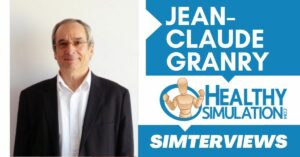
Simterview Avec le Professeur Jean Claude Granry, Pionnier Français de la Simulation en Santé
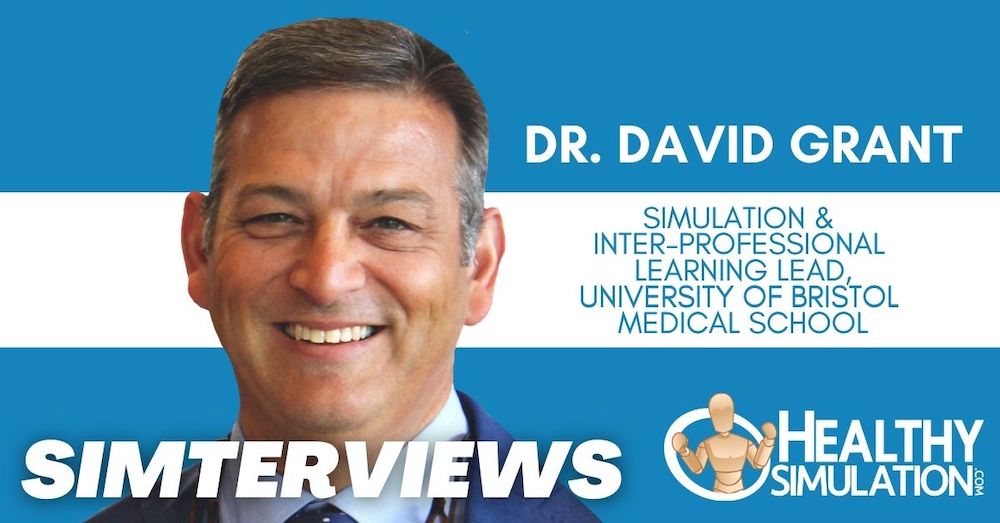
Simterviews: Dr. David Grant | Simulation Learning Lead, University of Bristol Medical School
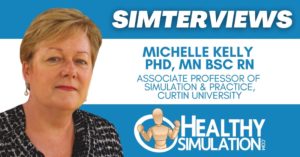
Simterviews: Dr. Michelle Kelly | Associate Professor of Simulation & Practice, Curtin University
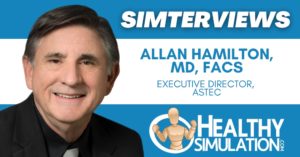
Simterviews: Dr. Allan Hamilton | Executive Director, ASTEC
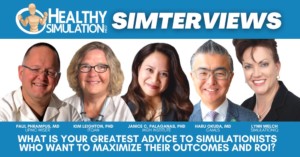
Simterviews: Medical Simulation Experts Discuss Ways to Maximize ROI
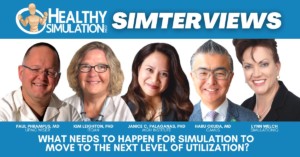
Simterviews: Medical Simulation Experts Discuss Next Level of Healthcare Simulation Utilization
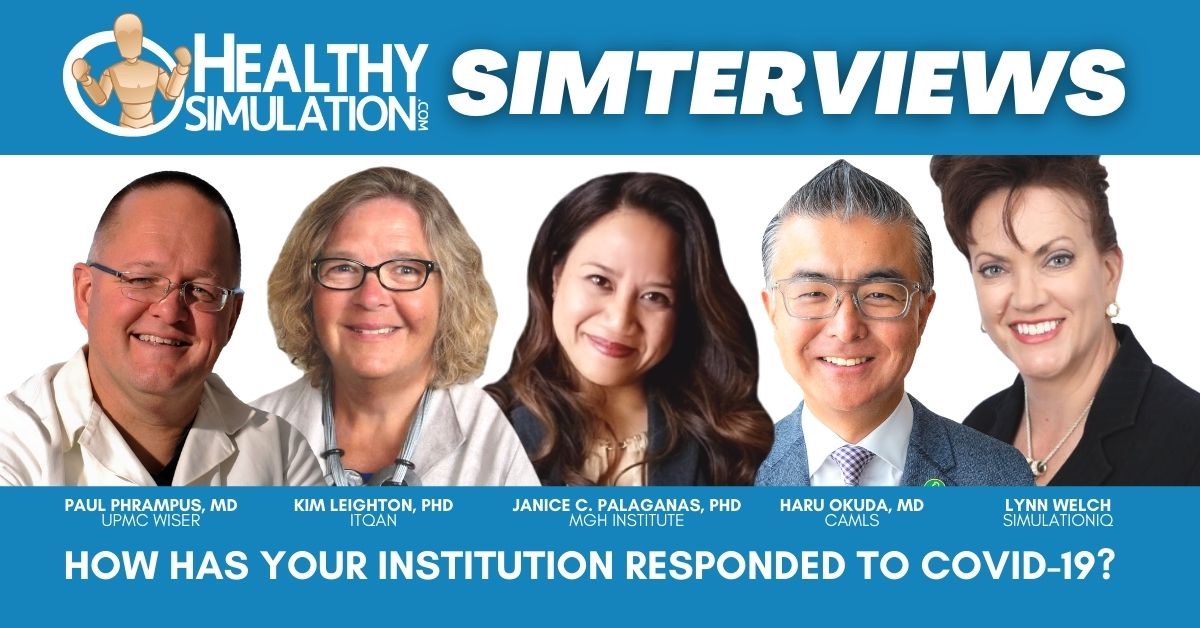
Simterviews: Medical Simulation Experts Discuss COVID-19 Responses
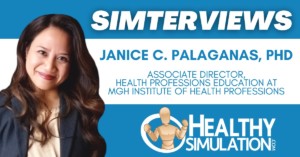
Simterviews: Dr. Janice Palaganas | Associate Director of PhD Program, MGH Institute
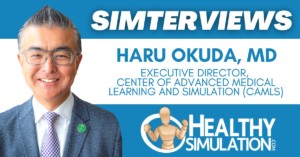
Simterviews: Dr. Haru Okuda | Executive Director, CAMLS
Lindsey Nolen is the Content Director for HealthySimulation.com. She is an award-winning journalist with years of experience writing about the many different facets of healthcare, including clinical simulation education and training. She also helped create content for the healthcare career information website, CareersinHealthcare.com.
Sponsored Content:



